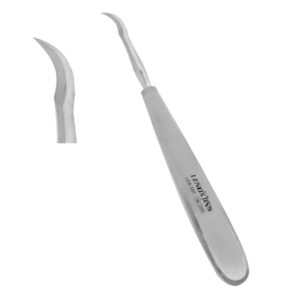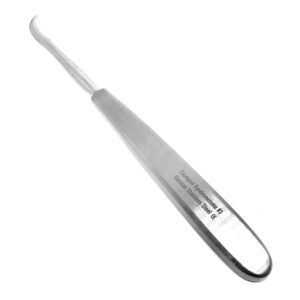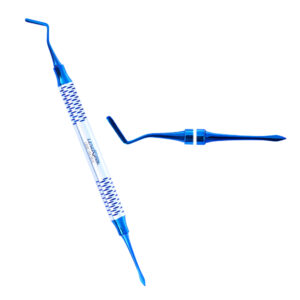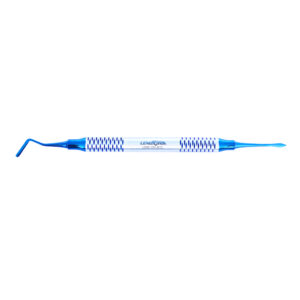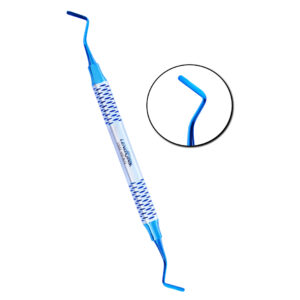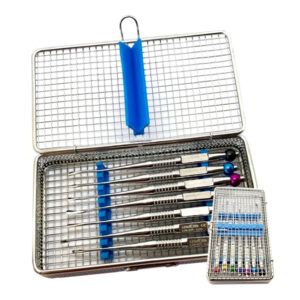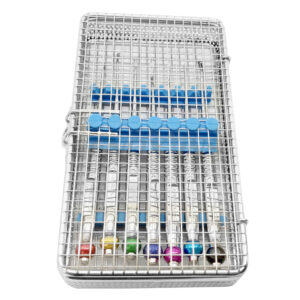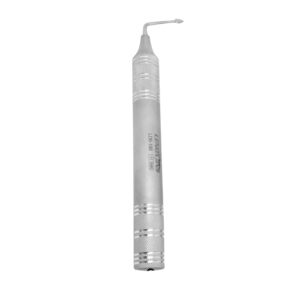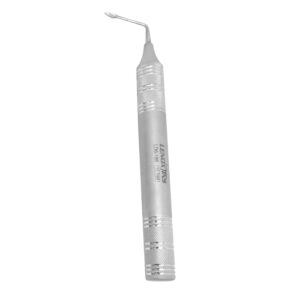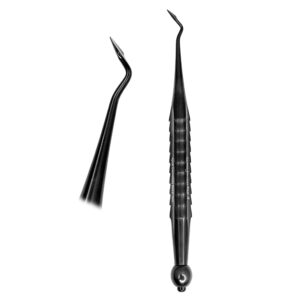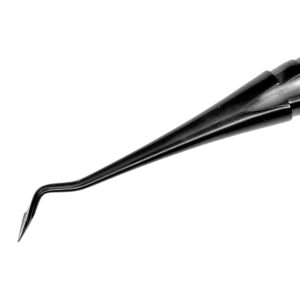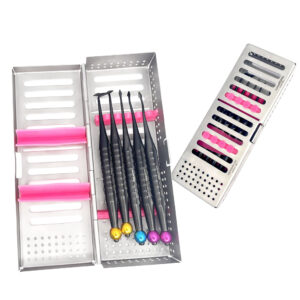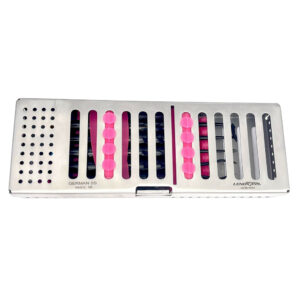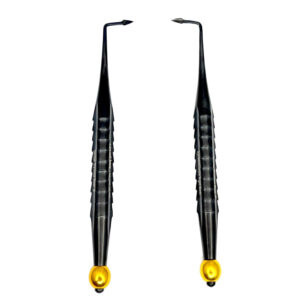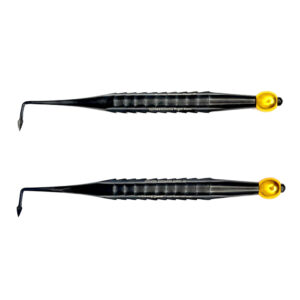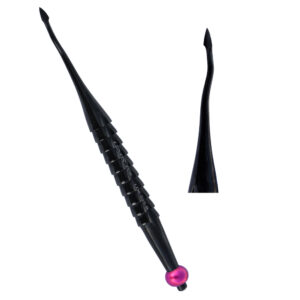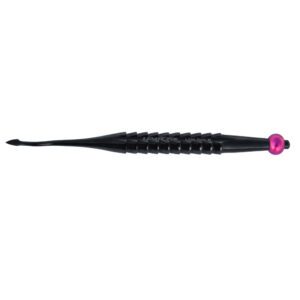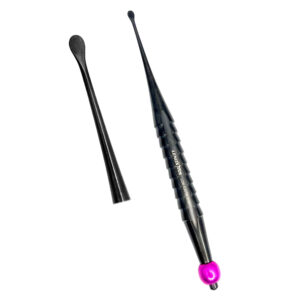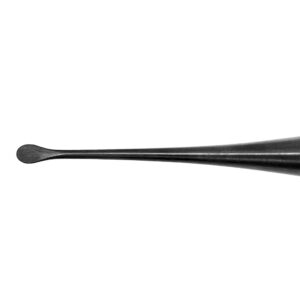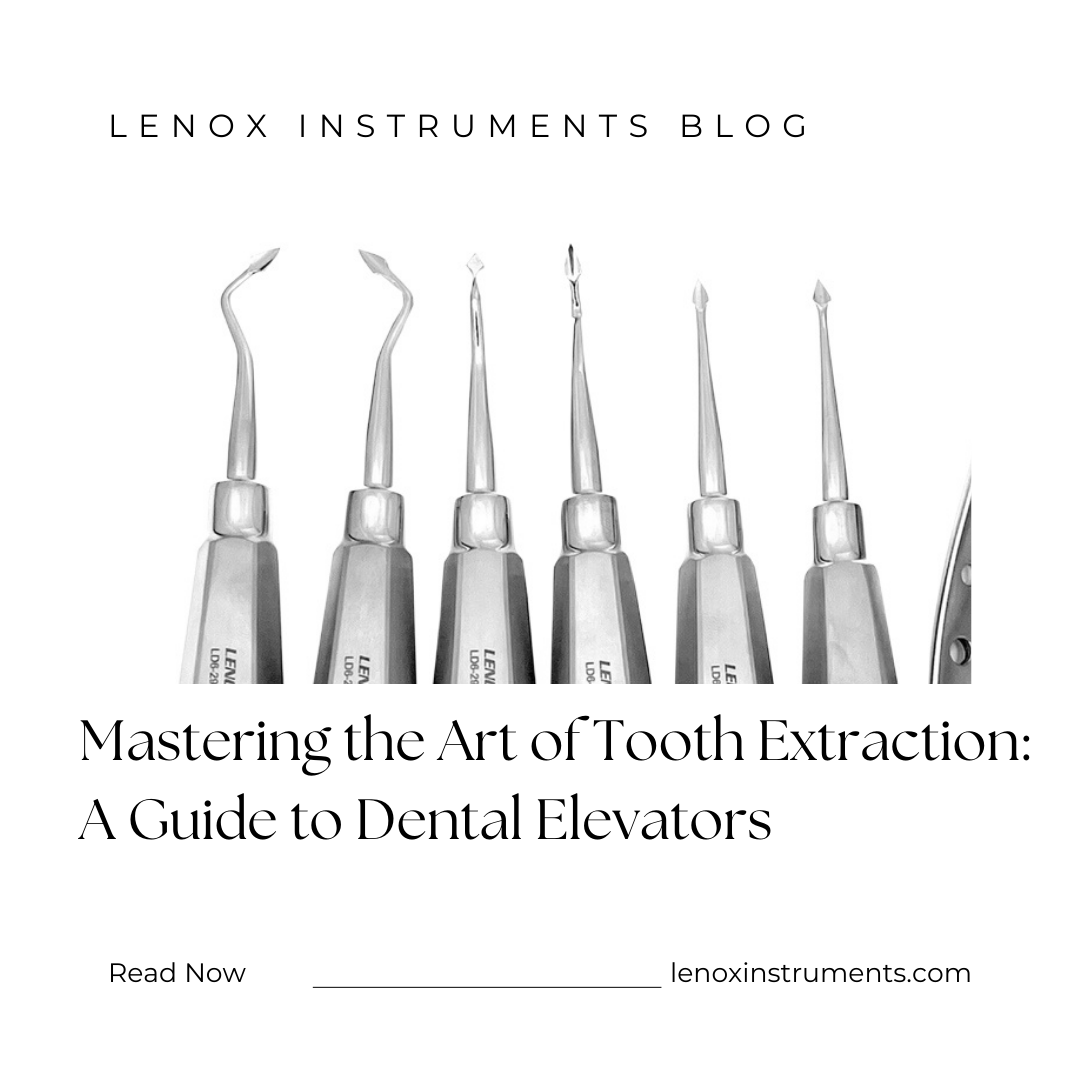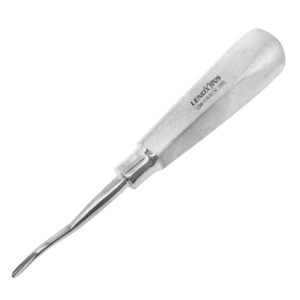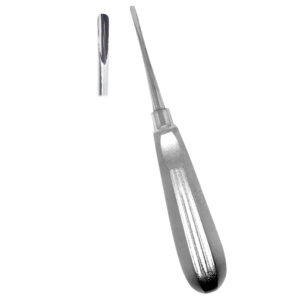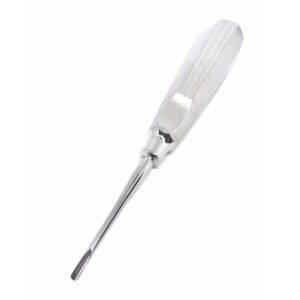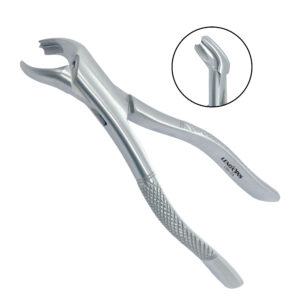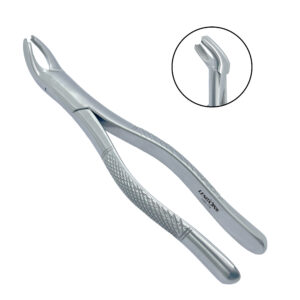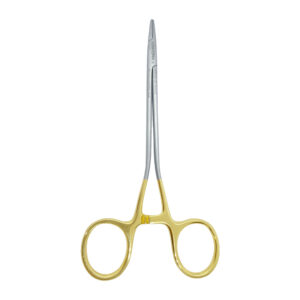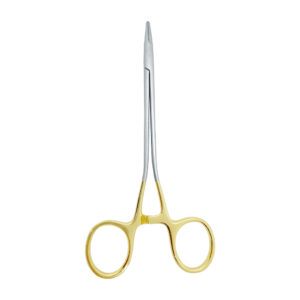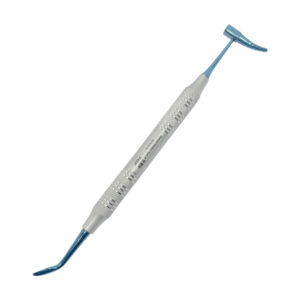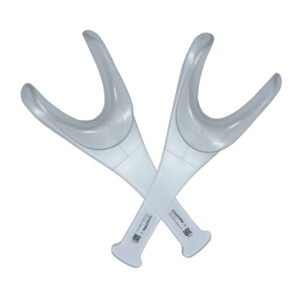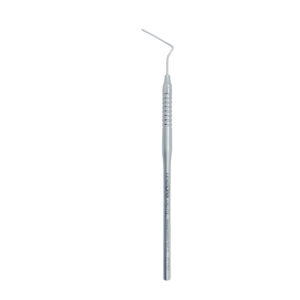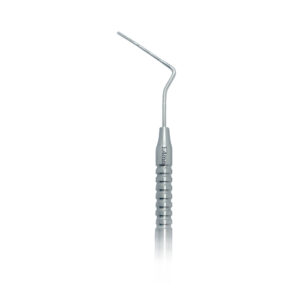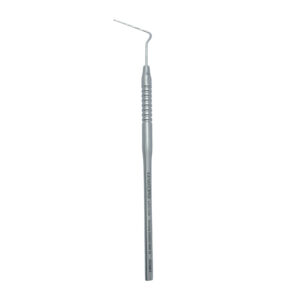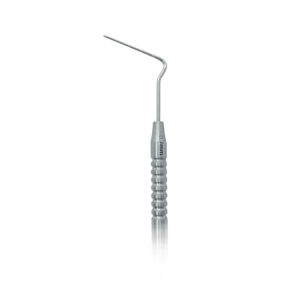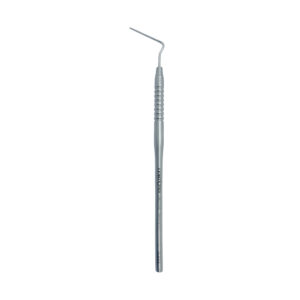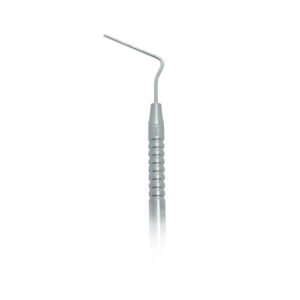Revolutionize Your Extractions with the Super Flexible Periotome Bernard Spade
- Posted September 16, 2024
- by LENOX INC CANADA
At Lenox Instruments, we’re excited to introduce our latest innovation in dental extraction tools: the Super Flexible Periotome Bernard Spade. This advanced instrument combines the precision of a periotome with the versatility of a spade design, offering unparalleled benefits for dental professionals performing atraumatic extractions.
Key Features of the Super Flexible Periotome Bernard Spade
- Super Flexible Blade: The ultra-thin, flexible blade allows for easy insertion into the periodontal ligament space, minimizing trauma to surrounding tissues.
- Bernard Spade Design: The unique spade-shaped tip provides excellent control and leverage during the extraction process.
- Premium Stainless Steel: Crafted from high-grade stainless steel for durability and corrosion resistance.
- Ergonomic Handle: Designed for optimal grip and control, reducing hand fatigue during procedures.
- Versatile Application: Suitable for various tooth types and extraction scenarios.
Flexible Periotome
-
Syndesmotome Chompret # 3 – Premium Dental Surgical Instrument
Rated 0 out of 5CA$50Original price was: CA$50.CA$30Current price is: CA$30.Discover the Syndesmotome Chompret # 3 by Lenox Instruments. Precision-crafted tool for periodontal ligament separation and atraumatic soft tissue manipulation. Durable, ergonomic, and professional-grade. Shop now! -
Periotomes PT2 Double Ended – Precision Dental Surgical Instrument
Rated 0 out of 5CA$50Explore the Periotomes PT2 Double Ended by Lenox Instruments, designed for atraumatic extractions with double-ended titanium-coated micro-serrated blades, ergonomic hollow handle, and durable stainless steel construction. Trusted by dental professionals globally. -
Periotomes Pt1 Double Ended – Precision Dental Surgical Instrument
Rated 0 out of 5CA$50Explore the Periotomes Pt1 Double Ended by Lenox Instruments, designed for atraumatic extractions with double-ended micro-serrated blades, ergonomic hollow handle, and durable stainless steel construction. Trusted by dental professionals globally. -
PDL Luxating Elevators Set Of 7 in Cassette – Precision Dental Surgical Instrument Set
Rated 0 out of 5CA$600Discover the PDL Luxating Elevators Set Of 7 in Cassette by Lenox Instruments. High-quality dental surgical instrument set for precision tooth extraction with minimal trauma. Premium stainless steel, ergonomic design, and versatile use. Shop now!
Benefits for Dental Professionals
- Atraumatic Extractions: The super flexible blade allows for gentle separation of the periodontal ligament, preserving the integrity of surrounding bone and soft tissue.
- Improved Precision: The Bernard spade design offers enhanced control, allowing for more accurate placement and manipulation within the socket.
- Reduced Patient Discomfort: By minimizing trauma, this instrument can lead to less post-operative pain and faster healing for patients.
- Versatility: Effective for both simple and complex extractions, including fractured or ankylosed teeth.
- Time-Efficient: The innovative design can speed up the extraction process, benefiting both the practitioner and patient.
Optimal Technique for Using the Super Flexible Periotome Bernard Spade
- Begin by inserting the thin, flexible blade into the periodontal ligament space.
- Use gentle, controlled movements to work the blade around the tooth, severing the periodontal fibers.
- Gradually increase the depth of insertion as you progress.
- Utilize the spade design for additional leverage when necessary, especially for stubborn or ankylosed teeth.
- Once the ligament is sufficiently separated, complete the extraction with appropriate forceps or elevators.
Flexible Periotomes
-
Super Flexible Spade Periotome Right Micro Serrated
Rated 0 out of 5CA$120Lenox Instruments' Super Flexible Periotome Spade Micro Serrated for Right-Sided Teeth is a specialized tool designed to provide precise and minimally invasive tooth extractions. Featuring a micro-serrated, flexible blade and an ergonomic handle, this periotome ensures gentle yet effective severing of periodontal ligaments on the right side of the mouth. -
Super Flexible Periotome Bernard Left Micro Serrated – Precision Dental Surgical Instrument
Rated 0 out of 5CA$120Discover the Super Flexible Periotome Bernard Left Micro Serrated from Lenox Instruments. Designed for atraumatic extractions and precision periodontal procedures, featuring a micro-serrated spade blade, ergonomic handle, and premium stainless steel. Trusted by dental professionals worldwide. -
Syndesmotome OUT Offset For Mesial Access 4MM – Precision Dental Surgical Instrument
Rated 0 out of 5CA$120Discover the Syndesmotome OUT Offset For Mesial Access 4MM by Lenox Instruments. Premium surgical tool for precise and atraumatic soft tissue separation. Durable, ergonomic, and professional-grade. Shop now! -
Syndesmotome OUT Offset For Apical Access 3MM – Precision Dental Surgical Tool
Rated 0 out of 5CA$120Discover the Syndesmotome OUT Offset For Apical Access 3MM by Lenox Instruments. Premium surgical tool for precise apical soft tissue separation and atraumatic procedures. Durable, ergonomic, and professional-grade. Shop now! -
Bernard Syndesmoyome Luxating Periotomes Set of 5 in Cassette – Premium Dental Surgical Instrument Kit
Rated 0 out of 5CA$600Discover the Bernard Syndesmoyome Luxating Periotomes Set of 5 in Cassette by Lenox Instruments. Premium stainless steel dental instruments designed for precision extractions and periodontal care. Shop now! -
Syndesmotome Set Right-Left 4MM – Premium Dental Surgical Instrument Set
Rated 0 out of 5CA$220Discover the Syndesmotome Set Right-Left 4MM by Lenox Instruments. Premium-quality surgical instrument set crafted for periodontal and dental procedures. Stainless steel, ergonomic design, and durable. Shop now! -
Syndesmotome Curved in Offset for Distal 4MM – Precision Dental Surgical Instrument
Rated 0 out of 5CA$120Discover the Syndesmotome Curved In Offset for Distal 4MM by Lenox Instruments. Premium stainless steel dental surgical instrument designed for precision, durability, and ergonomic control. Shop now! -
Separator Straight 4MM – Precision Dental Surgical Instrument
Rated 0 out of 5CA$120Explore the Separator Straight 4MM by Lenox Instruments. Premium-quality surgical tool for precise and atraumatic tooth separation. Durable, ergonomic, and professional-grade. Shop now!
Why Choose Lenox Instruments?
As a leading Canadian manufacturer of dental instruments, we at Lenox Instruments are committed to providing you with tools that enhance your clinical outcomes and efficiency. Our Super Flexible Periotome Bernard Spade is a testament to our dedication to innovation and quality in dental instrumentation.
Care and Maintenance
To ensure the longevity and performance of your Super Flexible Periotome Bernard Spade:
- Clean and sterilize after each use according to standard protocols.
- Inspect the blade regularly for signs of wear or damage.
- Store in a dry environment to prevent corrosion.
Elevate Your Extraction Technique
Experience the difference that our Super Flexible Periotome Bernard Spade can make in your practice. With its innovative design and superior performance, this instrument is set to become an essential part of your extraction toolkit.Ready to transform your extraction procedures? Visit our website at https://lenoxinstruments.com/ to learn more about the Super Flexible Periotome Bernard Spade and our full range of innovative dental instruments.Invest in precision. Invest in patient comfort. Invest in Lenox Instruments.



